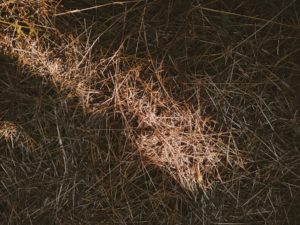
If you see brown or yellowish grass on your lawn, it might be a good time to check for disease.
Unfortunately, our lovely green lawns are made up of living plants. And whether we like it or not, plants are just as susceptible to disease as humans and animals are. The disease is just about the worst thing that can happen to a lawn, and the worst part about it is that it can spread to other areas. Thankfully, most diseases that affect lawn grass or sod have very obvious warning signs that are easy to catch before it’s too late. Here are three common lawn diseases that affect the quality of landscaping, along with their causes and effects.
Dollar Spot Lawn Disease
Have you ever noticed a strange “dead spot” in your lawn that never seems to grow no matter what? You’ve tried fertilizers, laying new sod, and maybe even attempted to germinate grass seeds on your own. If still nothing works, dollar spot disease is the likely culprit. This disease is caused by a lawn fungus that slowly kills grass over time. Dollar spot disease, unfortunately, can spread very rapidly via the moisture in the soil, so it’s important to make sure that you are proactive when you notice anything suspicious. This disease is most commonly developed in particularly rainy or humid climates on Bermuda or Bluegrass. If you notice it rains a lot more regularly than usual, it’s important to look for signs of dollar spot affecting your lawn.
Red Thread Lawn Disease
Red Thread disease is similar to dollar spot, as it is also caused by a fungus. However, it is much more severe and can spread very rapidly. The grass will be quickly infected and may die within days of contact with the fungus. This disease thrives under humid, rainy, and wet conditions and primarily affects Bermuda grass and fescues. To prevent red thread lawn disease, make sure you are taking proper care of your lawn, even during the rainy months, by regularly mowing and fertilizing.
Summer Patch Disease
This disease, also caused by a fungus, is particularly common in the summer months, hence its name. In the autumn, when the leaves fall from trees and decompose, the fungus that causes summer patch disease forms but lays dormant. When the soil temperature reaches an average temperature of 65 degrees, the fungus comes out of dormancy and can start attacking your lawn roots, leaving it with ugly yellow spots of diseased grass. Kentucky bluegrass is the most likely type of grass to be affected. To prevent this disease from getting worse, try to avoid nitrogen-based lawn fertilizers.
Have More Questions? Stay in Touch!
Order early and order often to ensure the best service possible. Contact us through our online page. Please find us at 27616 Little Lane, Salisbury, Maryland 21801. Our phone number is 410-726-6103, and our fax number is 410-742-6550. Speak to Jason Anderson for Turf Grass Sales. Reach him by email at jason@quanticocreeksod.com. Finally, follow us on social media on Facebook, LinkedIn, and our blog!
